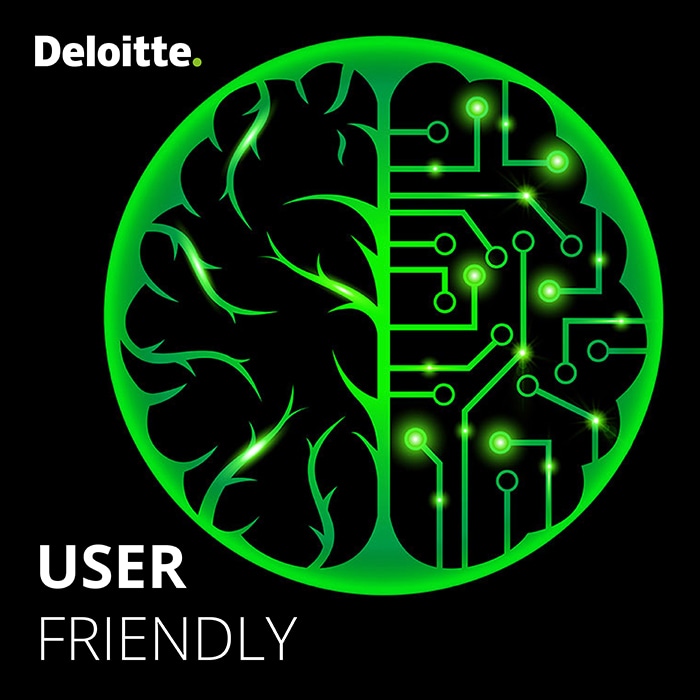AI and human-centered design has been saved

Podcast
AI and human-centered design
Rethinking design in a future with AI
With recent advances in artificial intelligence (AI), machines are tantalizingly close to demonstrating intelligent behavior equal to humans. When interacting with a machine becomes indistinguishable from interacting with a human, what does this mean for human-centered design? Tune in to this User Friendly podcast for insights as technology leaders from Motorola Solutions and Deloitte explore AI and its future, the implications of generative AI for business, and the evolution of software development.
User Friendly: AI and Human-Centered Design

Listen and subscribe to the User Friendly podcast
Visit the User Friendly library for the full collection of episodes
There are three real buckets where we think generative AI will really make a difference. Productivity is bucket one, the second is user experience—and that’s really the interaction between users and the product. And the third is customer experience, how our customers interact with us as a company. Those three areas are where I think generative AI stands to make some pretty big functional differences in how we do our jobs day to day.
—Mahesh Saptharishi, Executive Vice President and Chief Technology Officer, Motorola Solutions
In this episode of the User Friendly podcast, Mahesh Saptharishi, executive vice president and chief technology officer, Motorola Solutions, and Nitin Mittal, global AI business leader, Deloitte Consulting LLP, join podcast host Hanish Patel to explore the future of AI and the new role of human-centered design. They discuss the opportunities and risks presented by generative AI, why establishing guardrails is a business imperative, and the impact of AI on the future of work, trust, and human-machine interaction.
Recommendations
Generative AI for Enterprises | Deloitte US
In this article, we look at the benefits and limitations of Generative AI, introduce a method to qualify if, where and how these cognitive tools can be used.
Software Engineering Services
Deloitte’s modern software engineering, product innovation, and domain experience are at the leading edge of business to help you create new enterprise value.









